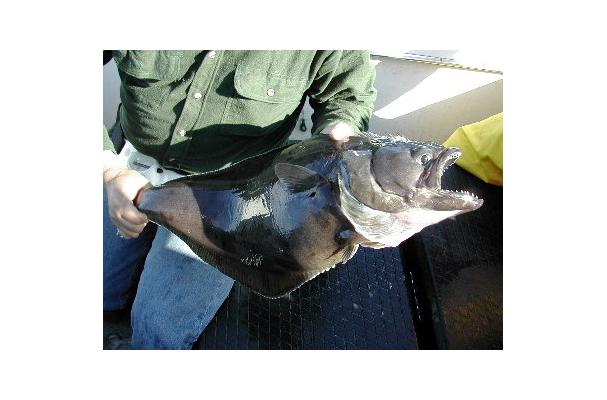Physical Description
Arrowtooth flounder muscle rapidly degrades when heated, resulting in a paste-like texture when cooked. In the past, this breakdown has limited efforts to develop a market for this fish. Recently however, several food additives have been successful in stopping this breakdown, increasing the marketability of arrowtooth flounder products as inexpensive flounder.
Tasting Notes
Flavors: Mild
Mouthfeel: Plump
Food complements: Lemonn, Capers
Wine complements: Dry white wine
Beverage complements: Ales
Substitutes: Halibut
Selecting and Buying
Seasonality: january, february, march, april, may, june, july, august, september, opctober, november, december
Choosing: If it is purchased fresh, make sure the fish has been displayed or stored on ice prior to buying it. Fresh fish will not smell fishy and should look moist, shiny, well-rounded and not dry or dull looking. After purchasing the fish, make sure it remains cold. It should be returned to refrigerated conditions as soon as possible after purchasing. For the best flavor and for safe consumption, fish should be used within 1 or 2 days of purchase. When storing fish, place it in the rear of the refrigerator on a bed of ice, securely wrapped in the paper from the fish market.
Buying: The approximately 25,000 tons of arrowtooth flounder currently caught, processed and sold each year from the Gulf of Alaska go mostly to Asian markets, where it is eaten as a less expensive flounder-type fish or where certain parts are used raw as sashimi or sushi in place of other, more expensive raw fish. Arrowtooth can also be used in the manufacture of surimi.
Procuring: Arrowtooth flounder is mainly caught by bottom trawl gear, including a specialized bottom trawl gear called selective flatfish trawl gear. Trawling involves the towing of a funnel shaped net or nets behind a fishing vessel. Trawl gear may be fished on or near the bottom. A bottom trawl is a trawl in which the doors, the footrope of the net, or both are in contact with the seabed.
Preparation and Use
They are boneless and skinless.that means easy preparation and lots of enjoyment. The thawing of these frozen flounder fillets is simple, fast and very easy. Buyers can deep fry them, microwave them, bake them, grill them or broil them.They cook very quickly but, they are so tender, they fell apart, almost.
Cleaning: Store the fish on ice or in the refrigerator until ready to cook.
Rinse the fish inside and out under cool water to remove any stray scales or bones.
Pat the fish dry with paper towels.
Conserving and Storing
To store flounder, remove packaging, rinse the fish under cold water, and pat dry with paper towels. Fish deteriorates when it sits in its own juices, so place it on a cake rack in a shallow pan filled with crushed ice. Cover with cling wrap or foil and set in the coldest part of the refrigerator. Flounder will store well this way for up to two days.
Social/Political
To make it more marketable, arrowtooth is often sold on the West Coast as turbot, although it is not related to the true turbot (Psetta maxima), a highly-valued fish caught off Europe.
History: 1950s-1970s – Arrowtooth flounder is caught in large, unselective flatfish fisheries for mink food in Oregon and Washington; stock is moderately depleted
1970s – A targeted fishery for arrowtooth flounder develops off West Coast; stock rebuilds
1978 – GOA Groundfish FMP is implemented
1982 – Pacific Coast Groundfish FMP is approved and implemented
1982 – BSAI Groundfish FMP is implemented
Prior to 1986 – In BSAI, arrowtooth flounder is managed with Greenland turbot
1986 to present – BSAI arrowtooth flounder separated into single species management
Prior to 1990 – GOA arrowtooth flounder managed within flatfish complex
1990 to present – GOA arrowtooth flounder separated into single species management
1990s – Strong year classes off West Coast; arrowtooth flounder stock increases
2003 – Groundfish Vessel Buyback Program is implemented for West Coast
2003 – Pacific Fishery Management Council begins using depth-based management for commercial and recreational groundfish fisheries
2008 – Amendment 80 allows trawl vessels in a cooperative to target arrowtooth flounder in the BSAI










